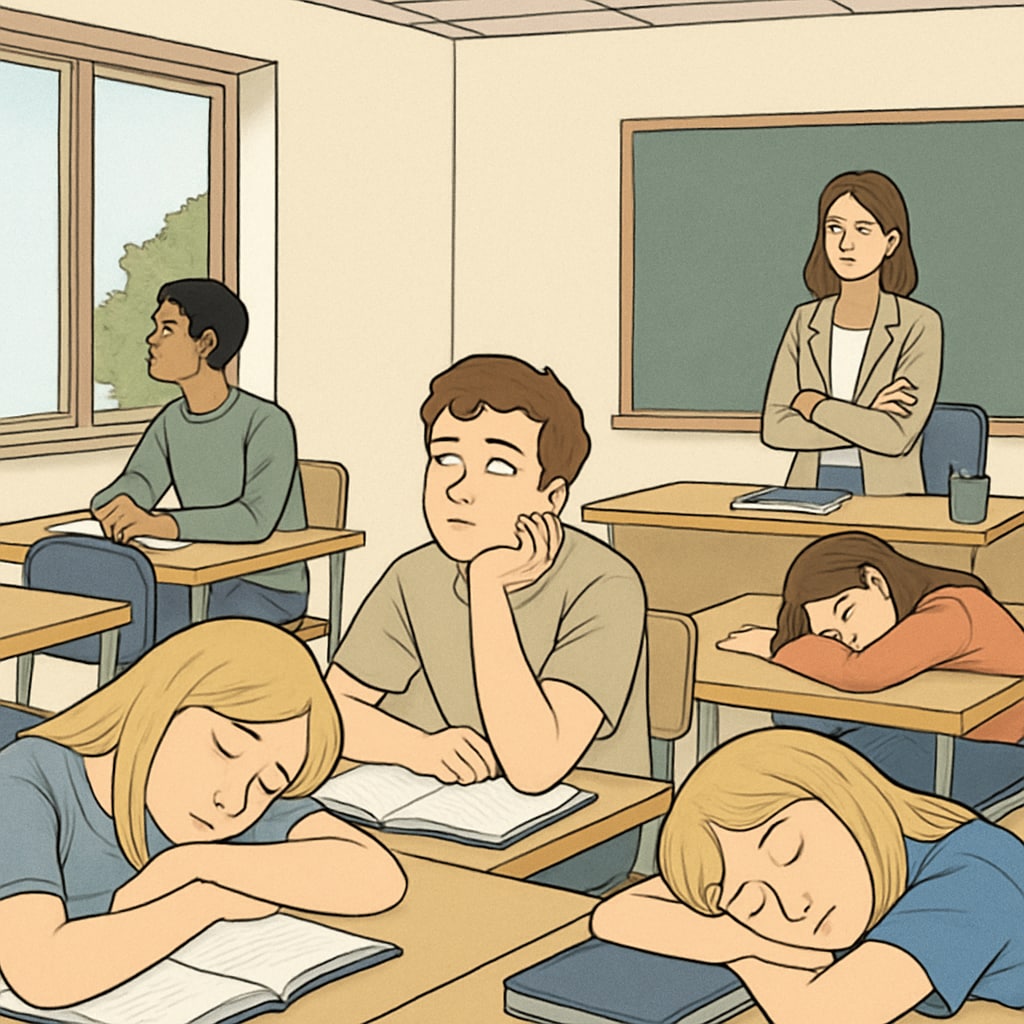Research from various countries, spanning the United States, China, the United Kingdom, and Senegal, reveals a startling trend: classroom boredom has become a universal challenge in the K12 education environment. This issue, often overlooked, has significant implications for learning outcomes and student well-being. By investigating the causes, impacts, and potential remedies to this widespread phenomenon, we can better understand and address the silent struggle of students worldwide.
Understanding the Causes of Classroom Boredom
Classroom boredom stems from a variety of factors, many of which are tied to systemic flaws in education systems. A primary cause is the lack of engagement in teaching methods. Traditional lecture-based approaches, which prioritize rote memorization over critical thinking, fail to captivate students’ attention. For example, a Britannica article on education notes the importance of interactive learning environments, which are still absent in many classrooms globally.
Other contributing factors include rigid curricula that leave little room for creativity and exploration, as well as the limited incorporation of technology. In addition, cultural and socio-economic disparities exacerbate the problem. For instance, in under-resourced schools, teachers may lack access to tools that could make lessons more engaging.

The Impact of Boredom on Students and Educational Outcomes
The consequences of classroom boredom extend far beyond a lack of focus during lessons. Research indicates that disengagement can lead to lower academic performance, decreased motivation, and even long-term disinterest in learning. A study published by Wikipedia’s education section highlights the correlation between emotional engagement and academic success, emphasizing the need for schools to prioritize student interest.
Moreover, boredom can negatively affect mental health. Students who feel disconnected from their learning environment often experience stress, frustration, and low self-esteem. These emotional challenges can hinder their ability to thrive both in and out of school. For teachers, a disengaged classroom leads to higher burnout rates, further perpetuating the cycle of ineffective education.

Solutions to Combat Classroom Boredom
Addressing classroom boredom requires a multi-faceted approach. Education systems must shift from traditional, one-size-fits-all teaching models to more dynamic, student-centered methods. Below are several strategies that have shown promise:
- Interactive Learning: Incorporating hands-on activities, group projects, and real-world problem-solving can make lessons more engaging.
- Technology Integration: Utilizing digital tools, such as educational apps and virtual reality, can capture students’ interest and enhance the learning experience.
- Personalized Education: Tailoring curricula to meet diverse student needs ensures that every learner feels valued and challenged.
- Professional Development: Providing teachers with training on innovative teaching methods equips them to create more stimulating environments.
In addition, schools should foster open communication between students and educators. By regularly seeking student feedback, teachers can adjust their methods to better suit the needs of their classrooms.
Looking Ahead: A Global Effort to Reinvigorate Education
Classroom boredom is a universal issue that demands immediate attention. While the causes and impacts vary across countries, the need for reform is clear. Governments, educators, and communities must collaborate to create engaging, inclusive, and adaptive learning environments. By addressing this overlooked phenomenon, we can unlock the full potential of K12 education and ensure that every student feels inspired to learn.
In conclusion, tackling classroom boredom is not just a matter of improving test scores; it is about nurturing a generation of curious, motivated, and resilient learners. The journey begins with acknowledging the problem and taking collective action to transform our global education systems.
Readability guidance: This article uses short paragraphs and lists to summarize key points. Transition words such as “however,” “therefore,” and “in addition” help maintain flow. Passive voice and long sentences are minimized for clarity.


